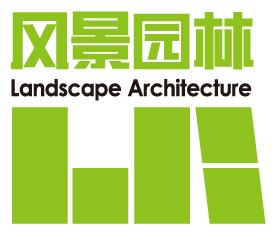Abstract:
Objective Water could be regarded as a vital element for human existence, which has shaped cities for centuries. Blue spaces, centred around water bodies, play a pivotal role in urban development by delivering various ecosystem services and influencing the design and planning of urban environments. In addition to the numerous benefits and services provided by water, recent research indicates that blue space exposure and perception could also enhance human health and well-being, especially in urban contexts. However, health benefits are often not or implicitly taken into account in design practices. While an increasing number of researchers acknowledge the importance of applying current health evidence to practice, there is currently a lack of specific methodological support to bridge the gap between evidence and actions. Furthermore, given the growing focus on healthy urban living, the demand for the development of healthy cities, and the requirements of Sustainable Development Goals (SDGs), addressing this gap is of utmost importance at present. Based on the analysis and synthesis of existing evidence, this research aims to propose a conceptual framework that links the health benefits derived from blue space exposure and perception with spatial design practices. The framework attempts to address the current gap and encourage ongoing exploration in future research and practice.
Methods This research first searches relevant publications on blue space and human health included in the Web of Science Core Collection and Google Scholar during the past five years, and selects the representative ones for detailed analysis and summary. Based on the analysis results, the key pathways linking blue space exposure and perception with human health are identified. Next, a tailored methodological, conceptual framework linking health evidence and design practices is proposed according to the frameworks and evidence in existing studies. Meanwhile, the results of the literature analysis and several Rotterdam cases at different scales are used to demonstrate the application of the framework and illustrate its feasibility.
Results Based on the results of the literature analysis, three main blue space exposure and perception types are summarized, including indirect perception and exposure, accidental perception and exposure, and intentional perception and exposure. Next, four main pathways linking the exposure to or perception of blue space and human health are identified and briefly discussed, including enhancing physical activities, reducing harmful exposure, benefiting psychological outcomes, and promoting social interactions. Subsequently, a four-step conceptual framework that translates the health evidence into practical design knowledge is proposed. The steps comprise extracting critical health evidence, summarizing key design concepts, categorizing core design elements, and translating into design principles, spatial patterns, and evaluation methods. At first, the research extracts key evidence from 57 representative literature. And then, the research summarizes 42 key design concepts. Next, through an analysis of the similarities and differences between the design concepts, five core design elements are identified, including the quantity, accessibility, visibility, spatial quality, and design process of blue space. Each element contains several specific design concepts. Among them, the first four elements are closely related to the designer’s development of spatial interventions, so this research further translates the four elements into practical design knowledge and illustrates them with Rotterdam cases. Specifically, the quantity, accessibility, and visibility emphasize the objective description of the characteristics of blue space, while spatial quality focuses on people’s subjective perception and experience of blue space. First, the research introduces three design principles aimed at increasing the quantity of blue space and proposes two distinct spatial patterns for each principle. On this basis, two flowcharts of evaluation methods using different types of data are presented, aiming to assess the application effectiveness of principles and patterns. In line with comparable reasoning, three design principles and six spatial patterns are introduced to enhance the accessibility and visibility of blue space. These principles and patterns are formulated across the city, community and individual scales. Moreover, given the intricacy of the evaluation methods, the research directly demonstrates specific method applications at various scales by taking several Rotterdam cases as examples. Finally, two principles and their corresponding spatial patterns for enhancing blue space quality are delineated. Considering the locality of people’s perception of blue space quality, the formulation of principles and patterns on quality is based on a comprehensive analysis of crowdsourced data on physical activities and streetscape in Rotterdam. It is noted that the design principles, spatial patterns, and evaluation methods presented in the research are excerpts of findings drawn from available evidence. Their primary function is to enhance comprehension of the conceptual framework proposed in the research. They can be viewed as open-ended results that will be continually expanded and updated by researchers and practitioners as new evidence emerges and cities develop.
Conclusion Based on the practical design knowledge translated from the aforementioned framework, including design principles, spatial patterns and evaluation methods, the research delves deeper into the exploration of their potential integration into practical design iterations. Combined with the “Analysis – Synthesis – Evaluation” (ASE) paradigm, the evaluation methods can be applied in both the analysis and evaluation phases, serving the purpose of identifying site problems, assessing the efficacy of potential spatial interventions, and aiding in deciding whether to optimize current interventions. In the synthesis phase, practitioners can utilize design principles and spatial patterns representing generic design knowledge to facilitate the creation of spatial interventions. These interventions, regarded as a form of specific design knowledge, take into account both current site conditions and additional design objectives simultaneously. Due to the complexity of design projects, the “ASE” process may be repeated several times until the final design decision is developed. Furthermore, the conceptual framework in this research has the advantage of being bi-directional, and the design practice may be a creative process of practitioners, which can provide valuable insights for the generation of novel principles and patterns.

 下载:
下载:
